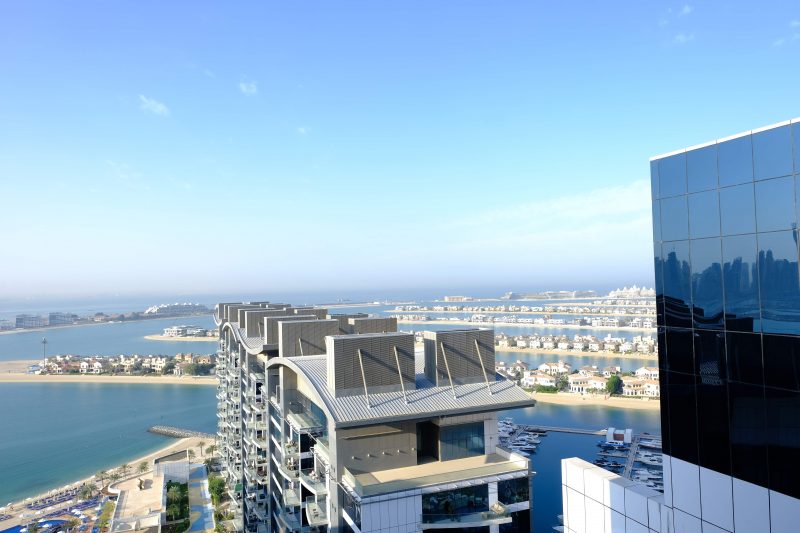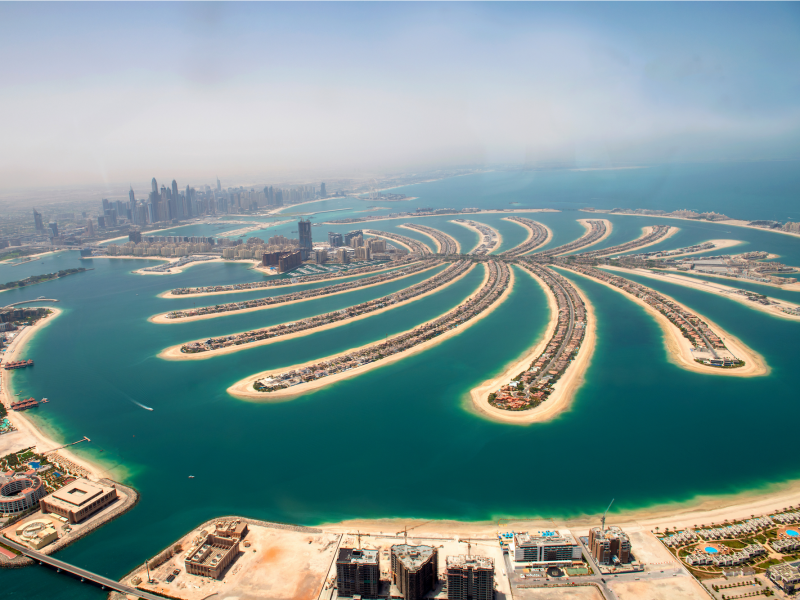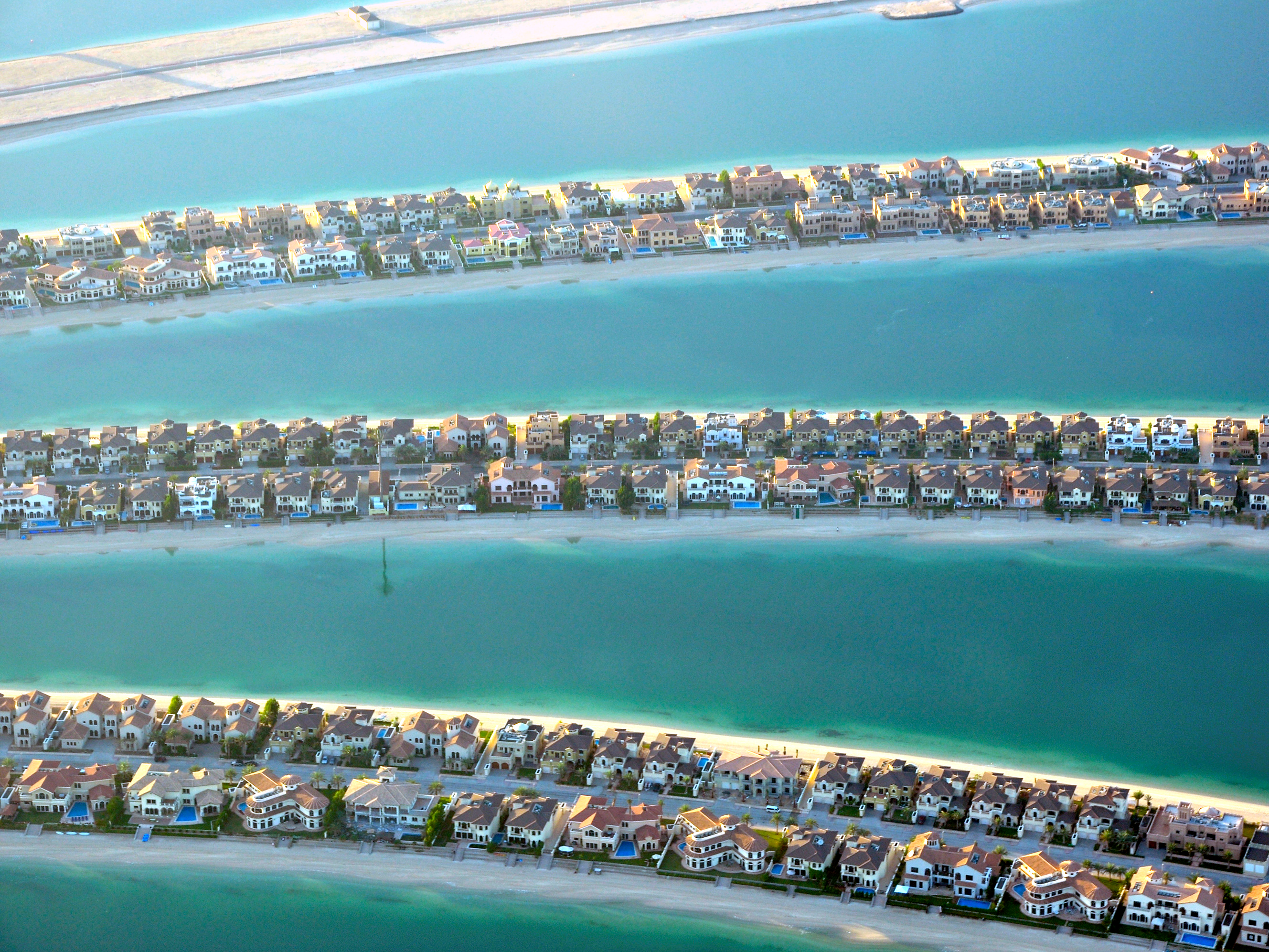- Dubai has the world’s largest artificial island, Palm Jumeirah, which is shaped like a palm tree and adds close to 50 miles to the city’s coastline.
- The island is packed with luxury hotels, beachfront villas, and apartment buildings. I stayed at one such hotel on a recent visit to Dubai.
- While I had seen many aerial photos of the island prior to visiting, they don’t do justice to just how impressive and absurd a development Palm Jumeirah is.
- The island is core to Dubai’s strategy to become the top tourist destination in the world, but critics say construction has done severe environmental damage.
Dubai is jam-packed with things that designed to be the biggest and most extravagant of the world – the tallest building, the second-biggest mall, the most luxurious hotel, and so on.
Perhaps no other project in the budding city more epitomizes this quest for absurd grandeur than the Palm Islands, an archipelago of artificial islands that extend off the Dubai coastline like the lair of a movie super-villain who just happens to really like the tropics.
When reading about Dubai over the years, the Palm Islands were inevitably one of the first things I learned about. They are so ridiculous an endeavor, so stereotypically what one might expect people with limitless money to do, that it defies comprehension. But they are there, and they are real, as I discovered on a recent trip to Dubai.
Due to an oversupply of hotels in Dubai right now, rooms at five-star hotels can be had for very cheap. So, on a recent trip, I booked a room for $180 at Dukes Dubai, a swanky beachfront hotel on Palm Jumeirah, the first completed palm island of three planned and the largest artificial island in the world. Construction began on the the other two, Palm Jebel Ali and Palm Deira, over a decade ago but is now on hold.
I'll be honest: I'm not usually impressed by things made big and extravagant for the sake of it. But, there's something impossible to deny about the hubris behind the Palm Jumeirah and, when you see it in person, it sticks with you, for better or for worse.
Most of the images of I've seen of the island are taken aerially or from space, so as show off the incredible detail of the palm-like structure. Those views don't do justice to the scale of the enterprise.
It hit me when I looked out of the window from my room at Dukes Dubai, which sits on the trunk of the island. Here's what it looked like:

In person and up close, you can still see the palm tree-structure. It is jarring how unnatural it looks. The first time I saw it, I did a double take.
Construction on the Palm Jumeirah began in 2001. It was constructed through a process of dredging up 3,257,212,970.389 cubic feet of sand from the Persian Gulf and then spraying it into place, adding nearly 50 miles to Dubai's coastline. GPS satellites were used to ensure the accuracy of the where the sand was sprayed to create the palm tree shape.
It is undeniably a monumental feat of engineering and modern technology.
Hotels line the trunk of the palm tree, while villas and homes sit on the sixteen fronds of the island. The first homes were handed over in 2006 and, at this point, the island is packed with hotels, apartment buildings, and construction. Nakheel, the government-owned developer behind the project, expects 120,000 residents and workers and 20,000 tourists on the island when it's all said and done.
All of that comes at an environmental price. Despite Nakheel's attempts to mitigate environmental damage, some researchers believe the construction of the islands has had drastic changes on local marine flora and fauna, coastal erosion, and wave patterns. Greenpeace called the islands a "visual scar," clouding the once clear Arabian gulf with silt and burying coral reefs. In 2006, the World Wildlife Fund declared that the U.A.E. 's ecological footprint was the "highest in the world."

In 2009, the New York Times reported that NASA satellites had found that the Palm Jumeirah island was sinking at a rate of 0.20 inches per year, a claim that Nakheel denies is true. The Environment Agency Abu Dhabi found that under its most severe climate change scenario, nearly all of Dubai, including the Palm Islands, would be underwater due to rising sea levels.
But all of that is in the future. For now, Dubai is focused on its aim to be the most popular tourist destination in the world by 2025.
Already, it is the fourth-most visited city in the world, with a projected 16.7 million visitors this year, according to Mastercard's Global Destination Cities Index.
The Palm Jumeirah is a big part of the strategy to get there. One look at the structure, which is loaded with beachfront hotels from major brands like Atlantis, St. Regis, Sofitel, Langham, W, and Waldorf-Astoria makes clear why.

